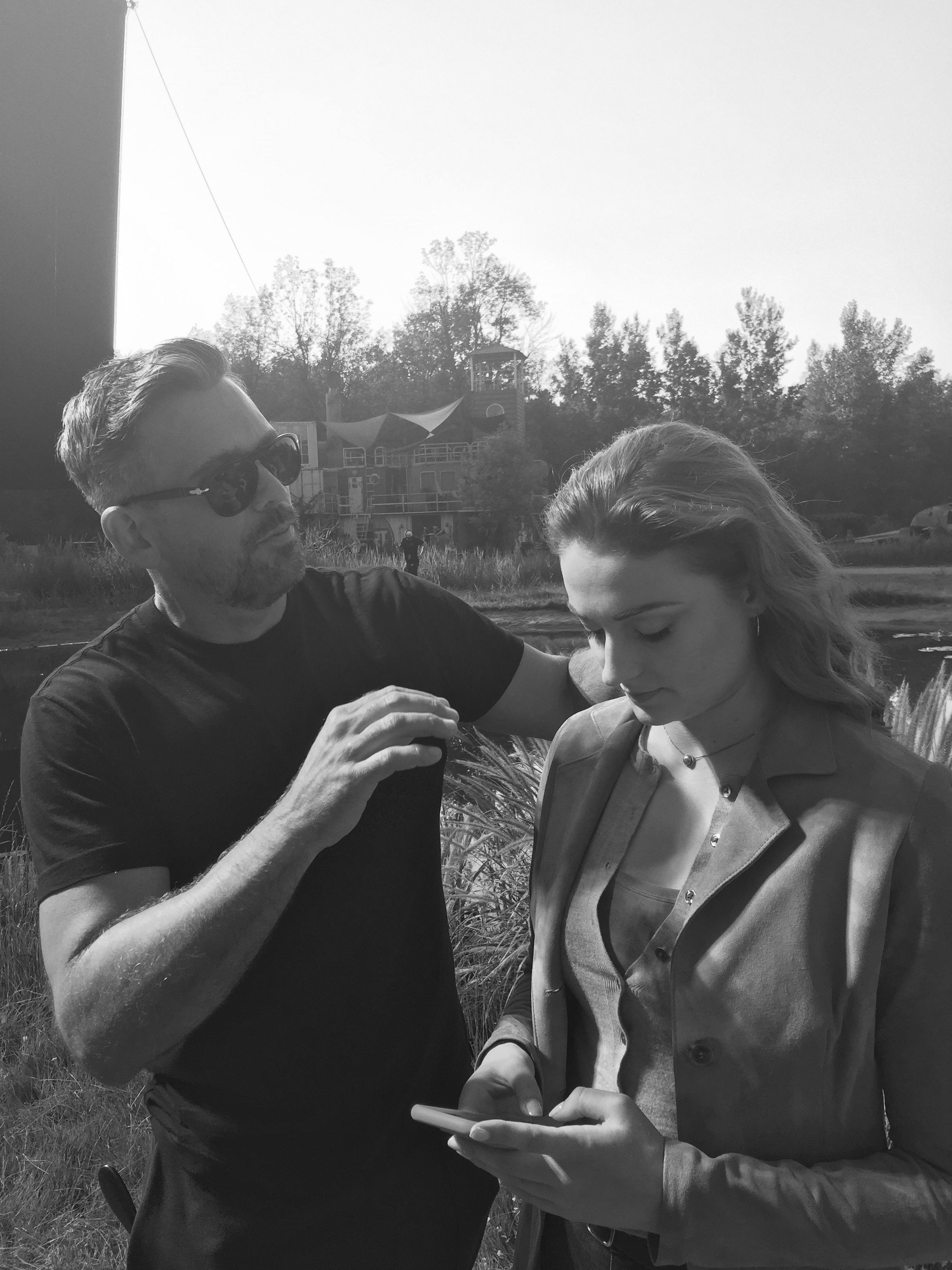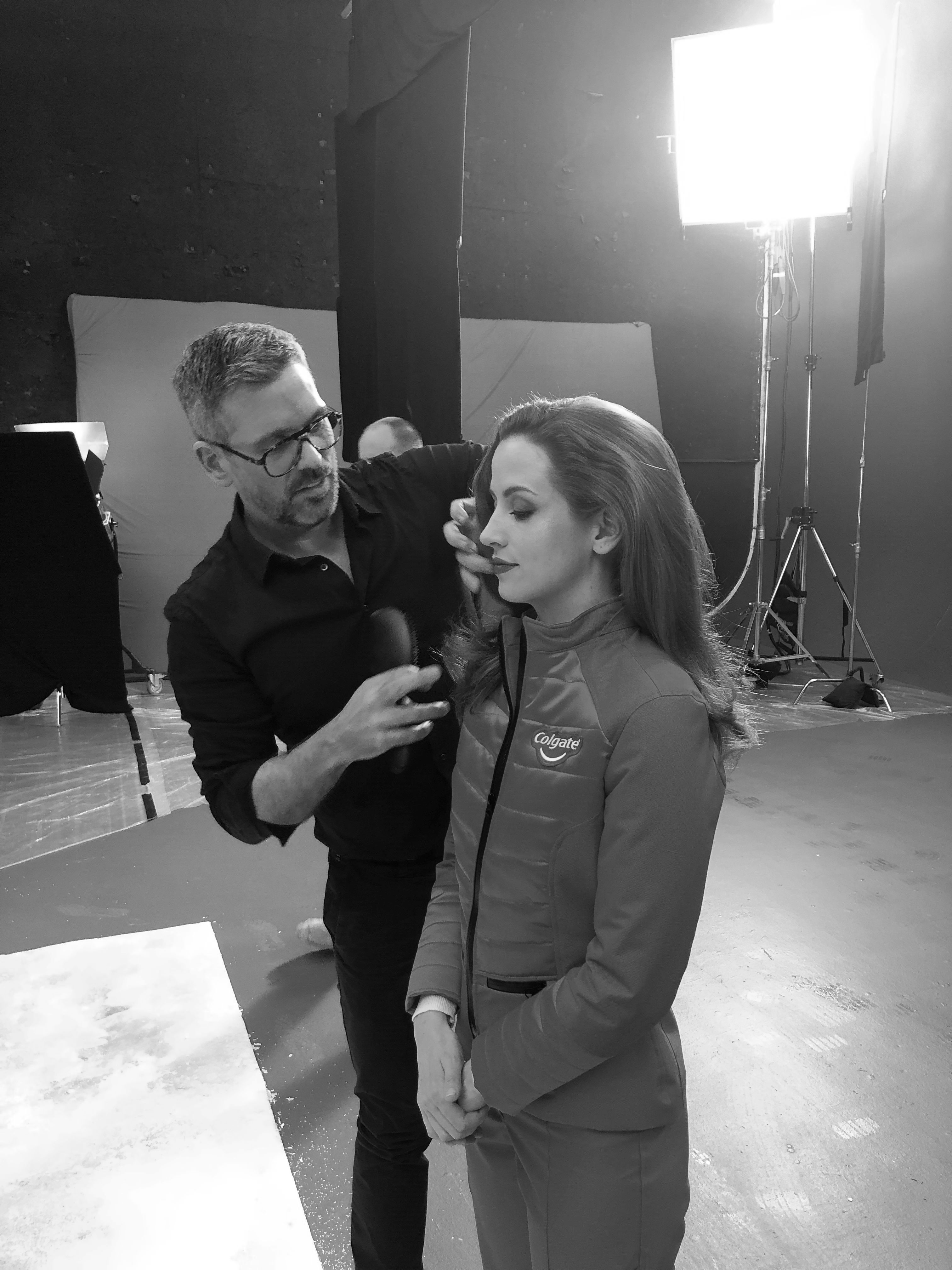Félix Larivière - Hair department head
Publié le December 8, 2022
.png)
WHAT IS YOUR JOB? HOW WOULD YOU DESCRIBE YOUR WORK?
I am a hair stylist and hair department head on U.S., Canadian and France-Quebec productions and co-productions. My job is to put together a team, to understand the script, to work on creating the characters and to manage the department’s budget. I collaborate with the director, the studios (if it’s a studio film), the producer and, of course, the actor to create character hairstyles.
Once the preparatory work is completed and shooting starts, we have to make sure everything’s working well. Sometimes, we work with a lot of photo doubles or stunt people and have to make multiple wigs so we can have an exact copy of the leading character on all the sets if they’re shooting two or three scenes at the same time. I’m also responsible for the person in charge of the extras, assembling the required teams and making sure the extras and hairdressers have everything they need.
WHAT PART OF THE JOB DO YOU LIKE THE BEST?
I’ve always been most excited by creating characters. It starts with visualizing and then developing the character in collaboration with the director and the studio. Next, there is working with the wigmaker, then the fitting on the actor, and then the big day when we do the screen test. After that, we will often make adjustments, or even start again from scratch if they don’t like the look. This is the part I like the most because it’s the most challenging. At the end of the day, your creation will be on the screen!
WHAT WAS YOUR FAVOURITE PROJECT?
One that comes to mind right away—and I think everyone who worked on it will agree—is Mirror Mirror. It was a very demanding film. I gained a lot of personal and professional experience from that project. I grew creatively, I learned about teamwork and budget management. There was no fixed budget because it was such a large-scale project. The preparations took two and a half months; I had a team of 10 or 15 very talented hairdressers working Monday to Friday putting in curlers and creating wigs. It’s a dream to work on such a big project; creatively the sky’s the limit! The dresses, the costumes, the makeup and the sets were all magical! All these elements combined to breathe life into an extraordinary film. It left me with wonderful memories.

IS THERE AN ANECDOTE ABOUT YOUR WORK THAT COMES TO MIND?
Early in my career, I made a big continuity goof. It was for a U.S. series starring Laura Linney that was being shot in Quebec, Alaska and San Francisco. I was very proud to be working on it. There was an indoor scene in a Montreal apartment and Laura had very curly hair for that shot. The shoot continued in Alaska, and then three months later, in San Francisco, we shot the scene directly following the one in Montreal.
I was stressed and had forgotten to check my continuity notes, so I asked the actress how her hair had been done last time. She told me it had been straight. So I gave her a nice, smooth blowout. The result is you see Laura inside her apartment with curly hair, and then she opens the door and steps outside with straight hair! At the time, I told myself: I’m a screw-up! Looking back today, I find it funny. Nobody died, and nobody complained about my work.
HOW DO YOU SEE THE FUTURE OF THE PROFESSION?
Hairdressers are currently in short supply—on movie sets and even in salons. It is a profession that no longer attracts young people. It’s very difficult to recruit and retain qualified personnel. You have to work hard, have talent, a good personality, and forget your pride, because the point is for the hairstyle to please the production and the actor. If it’s not what they want, you have to roll with it and quickly redo it.
The main problem is the hours. The younger generation values quality of life above money, which is the complete opposite of my generation. The reality is that on an American film, you can end up doing 15 or even 17-hour days. The last project I worked on, it was 14 hours a day, six days a week. Then on the seventh day we were on a plane. That kind of pace is alright for two or three weeks, but after three months you’re tired and that’s natural. We’re not getting any younger and I too have changed, I too want to prioritize quality of life. There aren’t many young people in their twenties working on the sets because of the pace. The kids don’t have the same priorities, and we have to learn to respect that.
One way to attract them could be to increase salaries. But I’m not even sure that would suffice. Ideally, they should change the way the work is organized, split the crew into teams and divide up the days. However, I am not so sure the producers would love this idea.
WHAT WOULD YOU SAY IS THE QUEBEC AUDIOVISUAL INDUSTRY'S GREATEST STRENGTH?
The talent, the resourcefulness and the passion of the technicians. Those are the things that make Quebec’s film industry strong.
